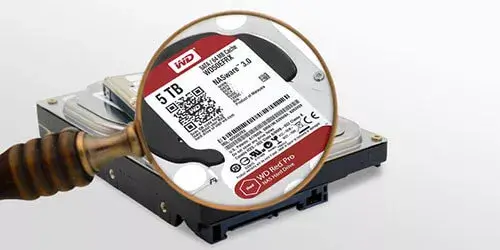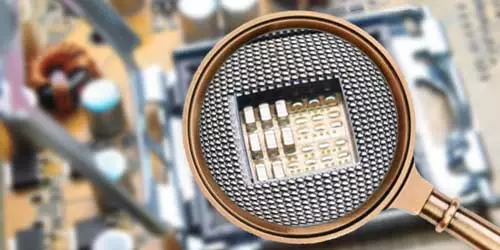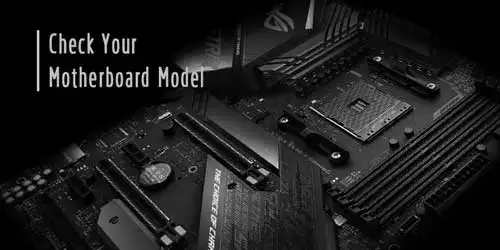How Can I Know How Old Is A PC

You may want to check how long your computer has been in use for a number of reasons. Perhaps you're thinking about whether it's time to upgrade your computer components, or you might not be sure if your computer is still under warranty, or maybe you're simply curious about the age of an old computer. Knowing how old your computer is can sometimes seem like an important thing, especially nowadays when new products are coming out at a much faster rate than ever before and some old components may not work well with the new system or software. With the following tips, you can learn how to find out the approximate age of the computer.
How to find out how old is a PC?
1. Check the serial number
To find out when your computer was manufactured, you can find out its serial number and then search for it on Google or the manufacturer's website. You are able to check the serial number in Command Prompt.
Step 1: Type cmd in the search bar and select Run as administrator.
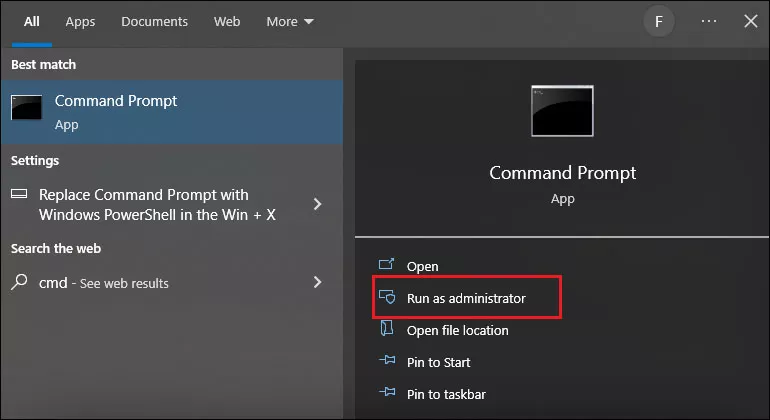
Step 2: Enter the below command to get the serial number of your computer:
wmic bios get serialnumberHowever, if your PC's serial number is not displayed after executing this command, it means that your PC's manufacturer has not saved the number in your computer's BIOS or UEFI firmware. Try to find the number from the computer itself in such case.
Usually, if you possess a laptop, there’s a sticker with the number and manufacture date on the back of the laptop. Also, some manufacturers print the number on the laptop’s shell or place the sticker inside the battery compartment, if the battery is removable. If you own a desktop PC, the sticker may be attached to the top, bottom or back of the chasis.
2. Check the Windows OS installation date
If you have not reinstalled Windows since you bought the computer, you can calculate the age of your computer by looking up the date on which the manufacturer originally installed the operating system.
Step 1: Run Command Prompt as administrator.
Step 2: Copy and paste the below command and press Enter:
wmic os get installdate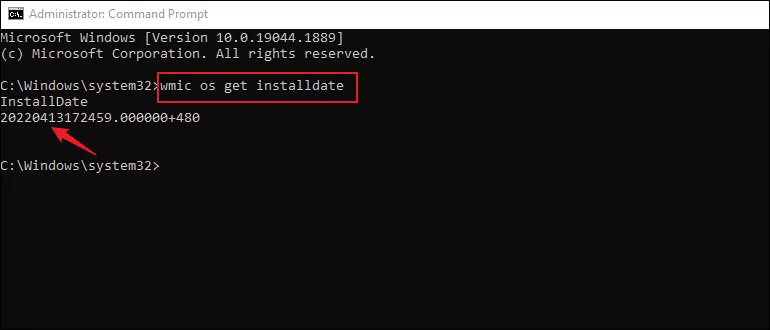
3. Check the BIOS date
Step 1: Run Command Prompt as administrator.
Step 2: Input command line systeminfo and press Enter. The date of the BIOS version is the year your computer was made.
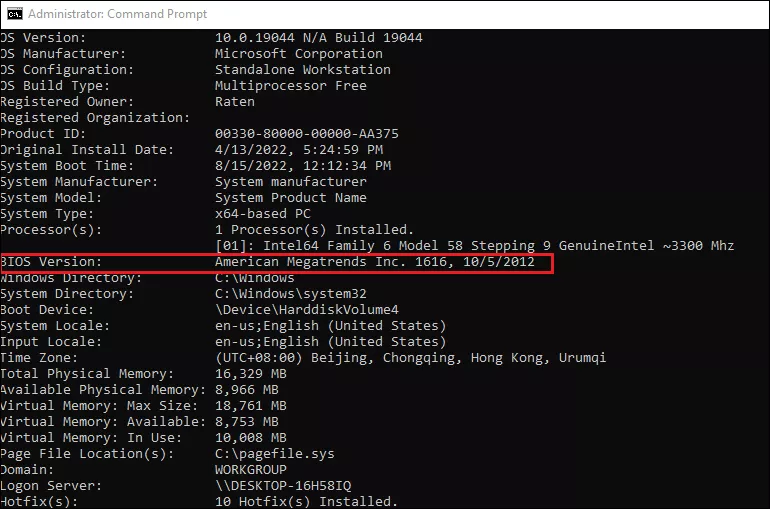
Or rather, you can find out BIOS version in System Information:
Step 1: Search system information in the search bar and open it.
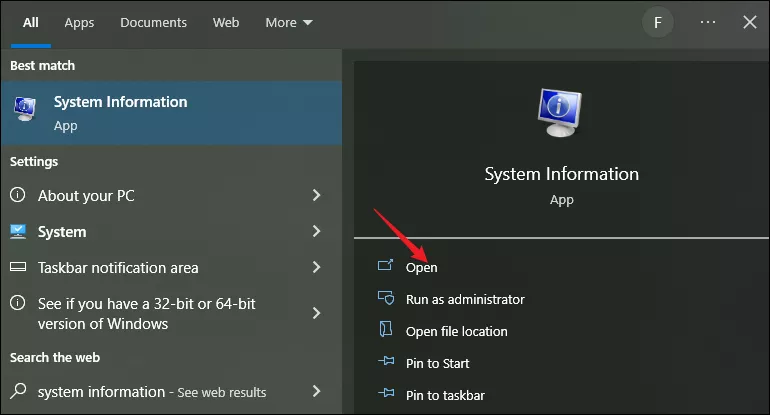
Step 2: Select System Summary and scroll down to locate BIOS Version/Date.
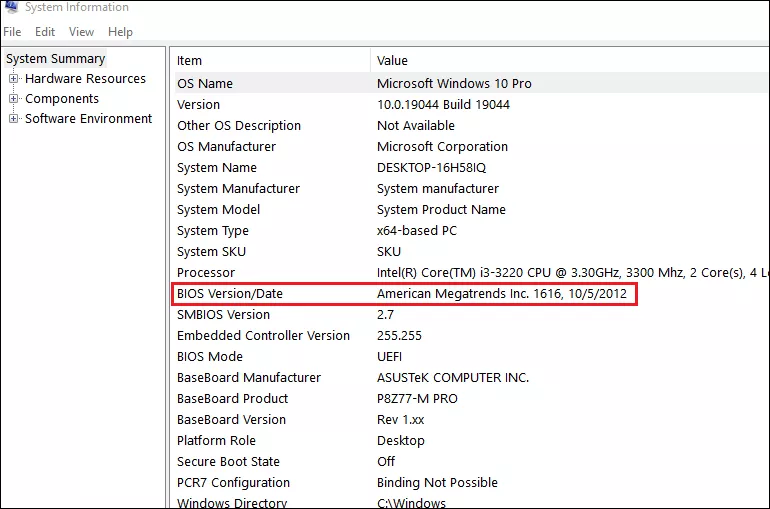
Note: If you have updated the BIOS, or your computer is second-hand so you have no idea whether its BIOS was updated before, then this date is not accurate for you.
4. Check the oldest date of folder
Step 1: Press Windows+E to open File Explorer and select This PC > OS(C:).
Step 2: Sort the list by Date modified. The oldest date is the initial set-up time of your system and thus you can work out how old your computer is.
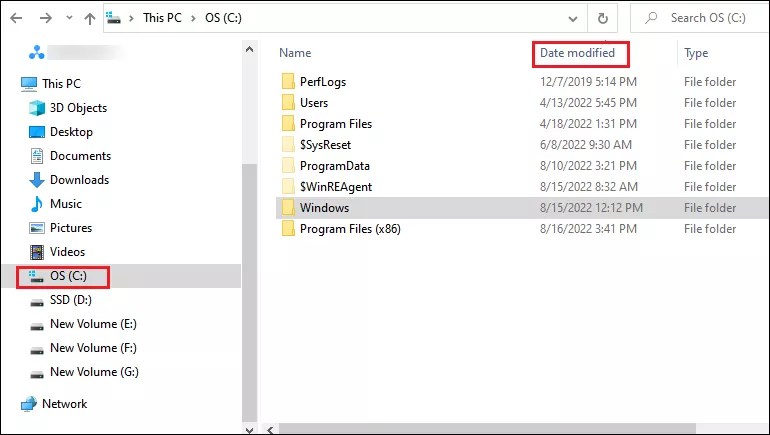
Note: Ignore the dates of DLL files because they usually tend to be well in advance.
5. Check the release date of the CPU
This method can provide an approximate age of your computer, but it will not be particularly accurate. Since new CPUs are released every year but older generations are not soon to be obsolete. So the actual age of your processor may be later than the date it was first released. To get the CPU model, follow these instructions:
Step 1: Press Windows+I to open Settings and select System>About.
Step 2: The CPU model is under Device specifications. Search its model on the browser for its release date.
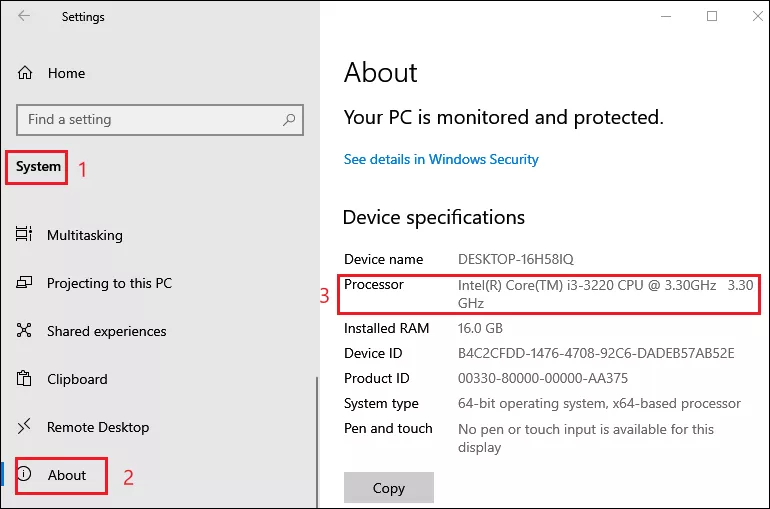
Alternatively, you can get the CPU information in System Information in method 3.
How to extend the lifespan of a PC?
- Sweep the dust off the computer regularly. Excessive dust affects the functioning of the computer fan and other hardware, preventing the heat generated during operation from being completely exhausted, thus increasing the burden on the hardware.
- Correctly shut down your computer. If there are no special circumstances, please do not keep pressing the power button until the computer is switched off, as this is a forced shutdown.
- Often check for hard drive issues through Check Disk tool. A corrupt hard drive can cause unstable system and frequent blue screen of death errors, getting so severe that it can even make Windows unbootable if the hard drive problem is not fixed in time. However, Windows users can utilize the build-in Check Disk tool to have a scan of all drives and problems will be automatically repaired.
- Periodically run Disk Defragmenter and Disk Cleanup. That would help free up disk space and improve the overall performance and speed of your computer.


